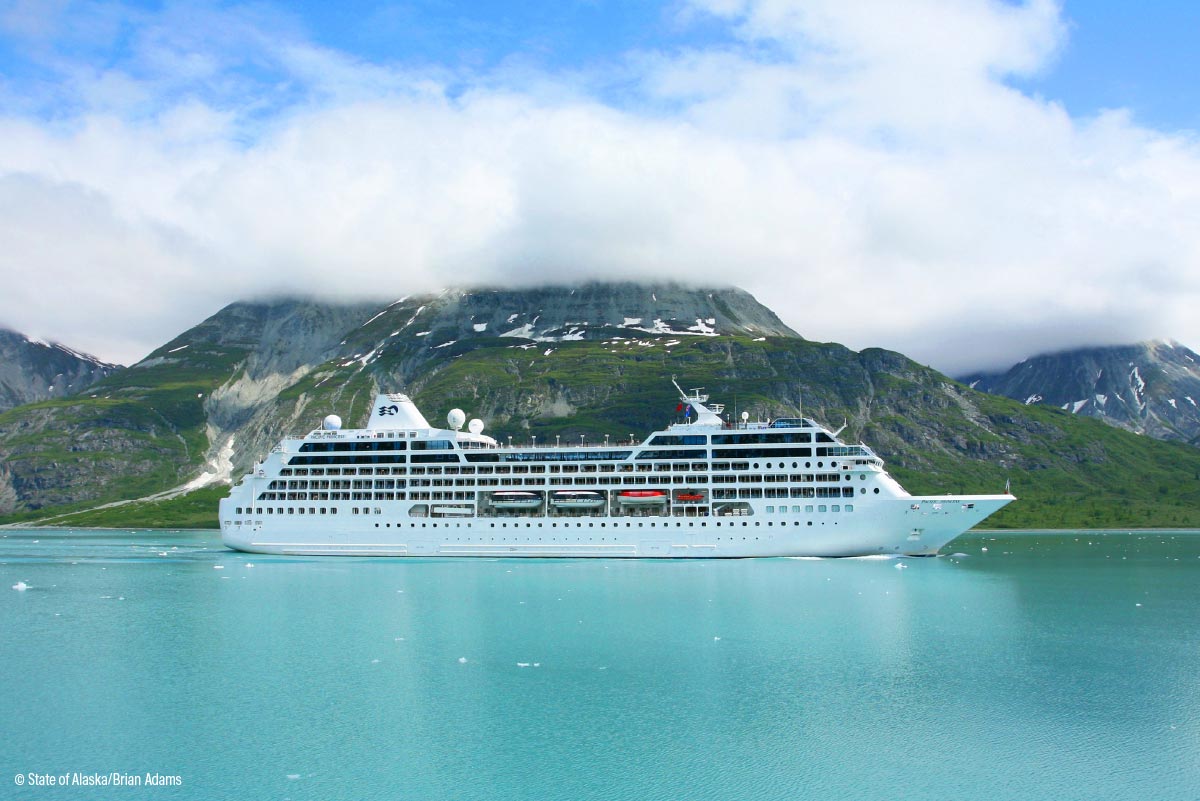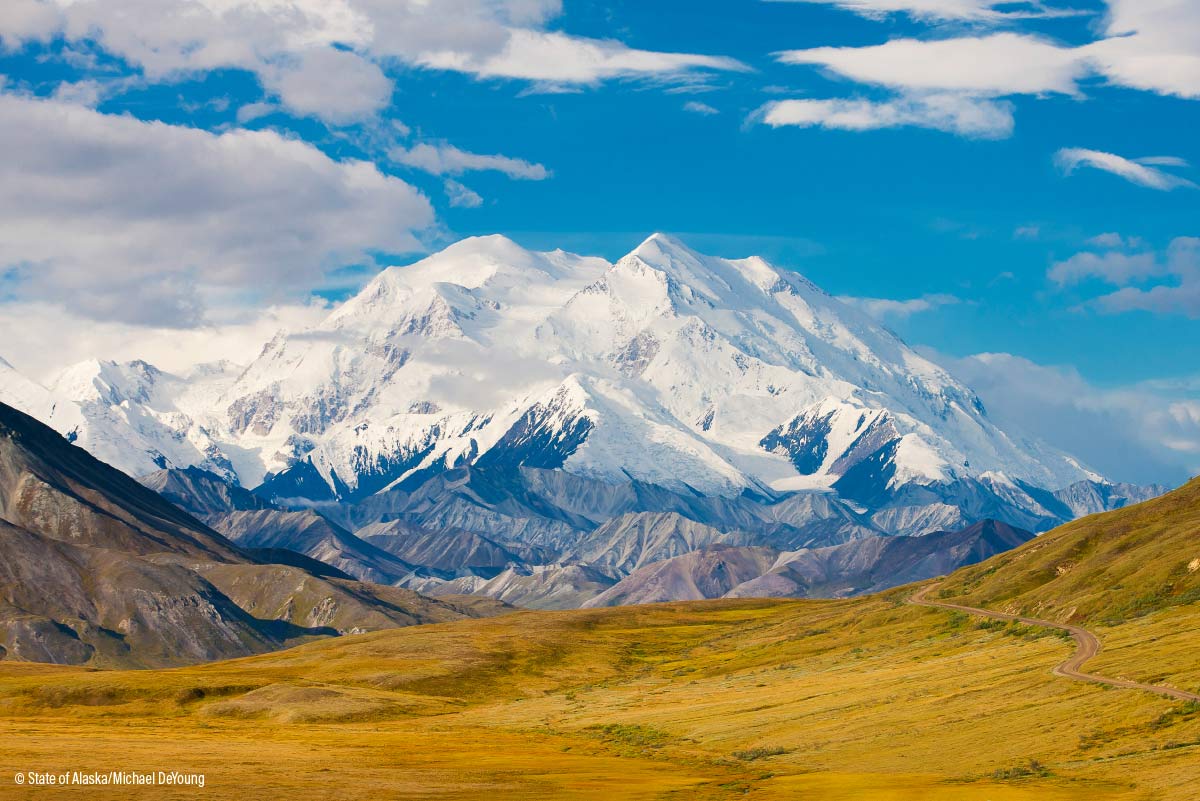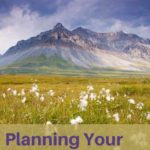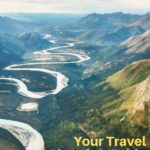
We’re as shocked as anyone to realize that Alaska remains a big hole in our coverage map. It’s the only state we haven’t visited. As adventure travelers, fans of great landscapes and photography, and curious explorers of hyper-local cultures, we’re way overdue in planning a trip to Alaska.
So, we sat up and paid attention when a free, downloadable Official State of Alaska Travel Planner fell into our inbox. We’d recently shared with our e-newsletter subscribers that we were intent on getting to Alaska in 2020. We’d also met an Alaska representative at a travel show and realized what a daunting task it can be to focus on a personal itinerary when there are so many options in such a large territory.
The timing is right. The planner will guide us and, we hope, entice you, dear reader, to take a look at all the possibilities for travel to Alaska, whether you’ve been there before or not. So, gather ‘round and join us in planning travels to our 49th state.
Surveying the Alaska Travel Planner, we’re beginning to see the chief considerations to ponder:
Table of Contents
When to Travel to Alaska
We’re not averse to winter travel. In Alaska that means starry dark skies, northern lights, dog-mushing and brave souls indoors and out. But we’d also like to consider some portion of our trip be on the water exploring marine wildlife and gorgeous fjords and glaciers. That points us to travel in other seasons.
In Alaska, spring and fall seasons–the shoulder seasons for tourism–pass quickly. Autumn is a flash in late September; Spring whips by from April to early May. So, the peak season, with long days and all sorts of activities up and running, is from May to September. Honestly, we’d be happy to go whenever our schedule permits.

Where to Travel Within Alaska
This is the tough part for us, narrowing down the itinerary within the country’s biggest state. Alaska has five distinct regions. Unless we move there (not a crazy idea), we’ll have to set priorities. The Travel Planner provides a good amount of detail on each region (with suggestions for modes of travel around the state). Handiest of all is a chart that denotes at what time of year and in which region you can enjoy your favorite activities.
Starting from the southernmost part of Alaska, and working up, here are the state’s main regions:
- Inside Passage. This strip of land and islands runs southeast bordering British Columbia and is known for the dramatic contrasts of temperate rainforest with fjords and glacier bays. Juneau and Ketchikan are the major cities.
- South-Central. This diverse region has some of everything. Home to Anchorage, the South-Central area combines beaches, mountains, more fjords, even volcanos. Despite being the most populous region of Alaska, South-Central offers plenty of wilderness experiences and abundant access points.
- Southwest. This is the string of Aleutian islands that curls west out into the Pacific Ocean plus the river deltas along Alaska’s west coast. Kodiak, Bethel, and Dillingham are the primary towns.
- Interior. Just the sound of it is inviting to us. The iconic Alaska landscapes of Denali National Park lie here. Fairbanks is the hub city.
- Arctic. The United States’ only arctic ecosystem deserves our attention. This would be the best place for northern lights viewing, too. Nome and Utkiagvik (Barrow) are the main towns.

What to See in Alaska
Parks
By habit, because we know what we like, we first turn to the pages outlining Alaska's parks. Quickly we realize that besides the eight National Parks, Alaska holds some 120 state park units, too. Fortunately, the Travel Planner helps by sorting parks by featured interests and activities. Choose parks, for example, for their hiking trails, for historic Gold Rush sites, for easy access, for spectacular landscapes, for wetlands or rivers, or for tundra environs.
Arts and Culture
Given Alaska’s peopled history from prehistoric to modern times, it’s not surprising its museums, art, and commerce reflect the rich heritage. The Trip Planner lists museums throughout the state and shopping tips, so that once we know where we’re going, we’ll be sure to allow time for these cultural stops.
Wildlife
As if we need more inspiration, the planner lists the chief wildlife attractions. Even once our plans are made, we’ll want to reference the Alaska Travel Planner to refresh our checklist of animals to look for. The big five on land are moose, bear, wolves, Dall sheep, and caribou; at sea we’ll seek Gray, Orca and Humpback whales, sea lions, and sea otters; and in the air we can try to spot eagles, sandhill cranes, puffin, ptarmigan, and ravens.
Northern Lights
There are no guarantees, but if viewing northern lights is a priority, this guide recommends visiting between late August and April. (Remember, summer is for the midnight sun.) Best chances are naturally further north and in the interior. You can simply go out on your own and look up, or hook up with a guide to help you to best viewing places.

What to Do in Alaska
Narrowing down the options and getting essential logistical information is easy when referencing the Travel Planner. Find specific suggestions for each of these activities.
Eat, drink, and be merry
Of course, one of our favorite ways to get to know a place is through food and the comradery that comes with it. The planner recommends brewery and distillery tours, agricultural tours, food markets, cooking classes, and a host of other culinary possibilities to work into your itinerary.
Fish
Learn what you might fish for and how to get outfitted. And yes, there’s fishing year round.
Hike
Find suggested trails of varying levels of difficulty. Crossing all sorts of terrain, you can choose day hikes for scenery or birding, treks for backpacking or camping, or maybe even a supported hike using some of Alaska’s 60 public-use cabins. (Reservations required.)
Road trips
The most immediate way of soaking up the scenery in Alaska is by driving through it. The planner suggests three different road trips under 500 miles, plus another ambitious option of 3,500 miles (on the Alaska Marine Highway system). In any case, the highlights are listed along with some commonsense road trip tips.
Flightseeing
Discover the exciting options for seeing far-flung wildlife, glaciers, or tundra landscapes from the air. Now that I’ve heard the word ‘flightseeing,’ I can’t wait to see for myself from one of the listed provider’s small planes.
Water activities
There are many ways to take to the water in Alaska, from jet skis, kayaks, or river rafts, to day-cruises, adventure ships, or ferries. Whether on rivers, circling islands, or close up against glaciers, we’re going to be sure we include this essential perspective of the state: from water level.

Getting There
The Alaska Trip Planner outlines the three main ways of getting to Alaska: by ship, by car, or by plane. Many visitors love combining the Alaska destination with a holiday onboard a cruise ship. For us, we’d rather exchange that cruise time for more time on the ground (or waterways) of Alaska. Driving to Alaska really appeals to us–along the famous Alaska Highway built in the 1940s, passing through British Columbia and the Yukon. If you choose this means, don’t forget your passport. Visit the North to Alaska website to view the various routes. Given our commitments in 2020, we just won’t have the time to drive. We’ll opt to fly this time.
Getting Around Within Alaska
It’s huge. As we review everything we want to see, we need to remind ourselves that Alaska takes up roughly the same area as the central states from Minnesota to Texas and Colorado to Kentucky. But there are all sorts of ways to get around: by air, rail, roads, and sea. Ideally, we’ll experience all four of those methods, and the Travel Planner conveniently lists all the providers for each. For example, we’re already looking into train travel (love it).

Decision Time
Downloading the Alaska Travel Planner is the first step. Reviewing the colorful sections of this guide has expanded our vision of what we’ll do once we’re there. For those of us who enjoy building most or all of our itineraries ourselves, this is a wonderful service. All the contacts we need are in one place, and all the ideas are floated.
We hope to combine a multi-day, active cruise in Alaskan waters with sufficient time in Wrangell – St. Elias and Denali Parks. We’ll add land time on our own–by train or road trip or both–to take in more highlights. Timing is our main issue, now, as we juggle other travel arrangements. Although we’d rather stay clear of peak season, July and August are currently most open for us. Stay tuned, and let us know how your Alaska travel plans are shaping up.
Note: This post, conceived and written by Travel Past 50, is sponsored by TravelAlaska, the state’s official tourism marketing program.
Up Your Travel Skills
Looking to book your next trip? Use these resources that are tried and tested by us. First, to get our best travel tips, sign up for our email newsletter. Then, be sure to start your reading with our Resources Page where we highlight all the great travel companies and products that we trust. Travel Accessories: Check out our list of all the accessories we carry to make getting there and being there a lot easier. Credit Cards: See our detailed post on how to choose the right travel rewards credit card for you. Flights: Start finding the very best flight deals by subscribing to Thrifty Traveler. Book your Hotel: Find the best prices on hotels with Booking.com. See all of the gear and books we like in one place on our Amazon shop.Got a comment on this post? Join the conversation on Facebook, Instagram, or Threads and share your thoughts!







Comments are closed.